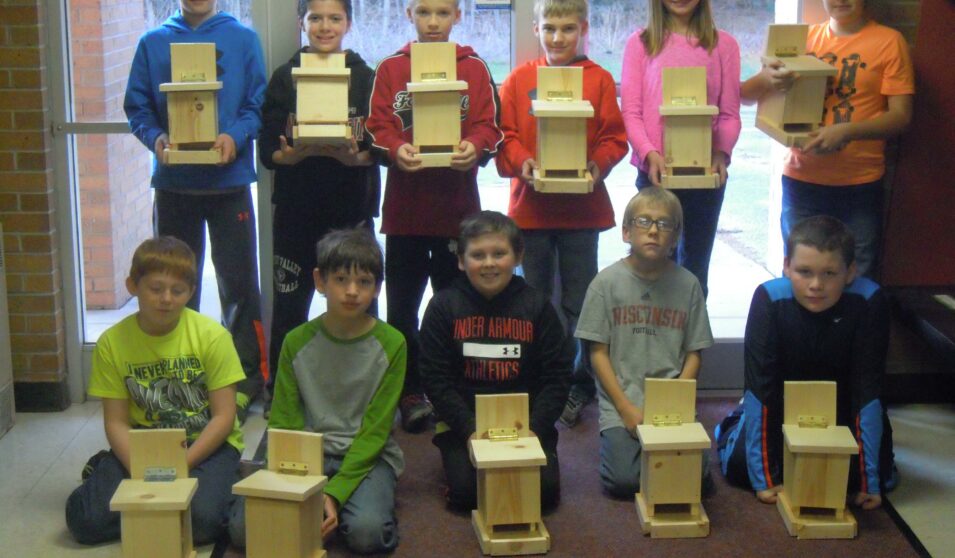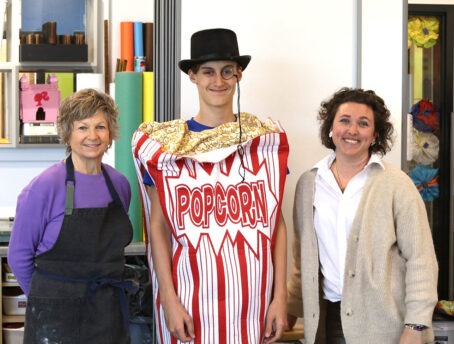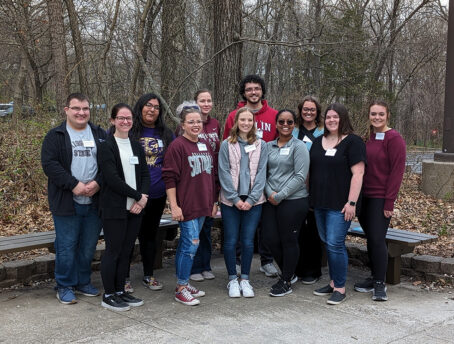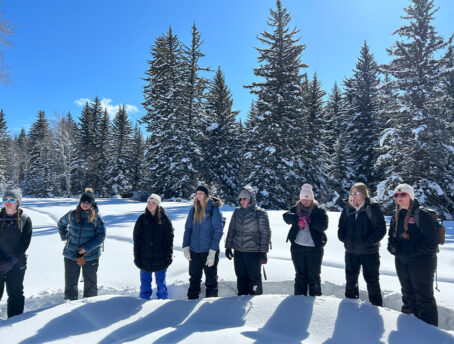Editor's note: Daniel Machovec, a 5th grade teacher at Wisconsin's River Valley Elementary, was awarded a grant in conjunction with the Madison Audubon Society and our Grants in Place program to purchase field guides and binoculars for the scientific study of bird habitat. Special thanks to Carolyn Byers, Madison Audubon Director of Education, for writing this excellent story of place-based education.
Thanks to a Prairie Conservation Education Grant, which provides environmental education in rural communities, an elementary school in Lone Rock, WI spent the last school year growing as scientists and learning about the wildlife in their own backyard. Daniel Machovec, a 5th grade teacher at River Valley Elementary - Lone Rock, lead the project with support from Madison Audubon Director of Education, Carolyn Byers. Students researched scientific questions as the older students mentored younger ones, all while growing their knowledge and love of nature.
Students experimented with different types of homemade bird feeders to determine which types of feeders would be most successful, and which types of birds would visit each one. These earth-conscious students were especially interested in testing feeders made from recycled materials, such as orange peels and plastic bottles. River Valley Elementary is fortunate to be adjacent to a small forest, and within walking distance of a local nature trail, providing ample opportunity for kids to explore!
In October, students scouted the area, becoming familiar with both the nature trails and the birds that lived there. Using new binoculars and field guides purchased through this grant, students learned to identify a variety of bird species including blue jays, American goldfinches, and black-capped chickadees. Students used this knowledge to determine where to place bird feeders later that winter.
In November, bird feeder construction began! The 5th grade students helped younger kids during the building process, teaching kindergartners how to create bird feeders out of oranges. The older kids cut each orange in half, and carefully removed the peel to form two perfect cups - no easy feat! The younger kids then poked holes around the rim of the peels, and used string to hang the feeder. The 1st graders spread peanut butter on pine cones and rolled them in birdseed, creating a tasty bird treat.
The 5th graders also helped 2nd and 3rd grade make feeders from recycled milk jugs and plastic bottles. Each 2nd and 3rd grade student got to decorate his or her own bird feeder. Finally, the 5th grade students built their own wooden bird feeders with a little help from their teacher, Mr. Machovec. Students carefully assembled the bird feeders using a hammer and nails.
As snow started to fall, the feeders were hung near the school grounds. Once a week, students checked each feeder and recorded how much seed had been eaten. Students discovered that while the orange peel feeders were fun and easy, they did not last very long out in the rain and snow. They determined that both the plastic bottles and wooden bird feeders were effective for feeding birds - and squirrels!
The project ended with a snowy field day for the 5th grade students, lead by Madison Audubon’s Carolyn Byers. The students were eager to tell Byers about their research, and took her on a tour of their study site. While visiting each of the feeders, students highlighted the pros and cons of each one, and offered suggestions on improvements that could be made. Byers pointed out animal signs for the kids to see: coyote scat, small mammal tunnels, and woodpecker holes. A herd of 14 deer crossing the trail, and a pileated woodpecker were highlights of the hike!
This experience gave these kids the tools to view the world as a scientist, ask questions about their environment, and confidence to find their own answers. The 5th grade students were proud to mentor younger grades, and learned patience and compassion in the process. The younger kids formed bonds with their older friends, and learned from people other than their usual teachers. We’re excited to watch the 68 kids at River Valley Elementary grow as scientists in the years to come.




